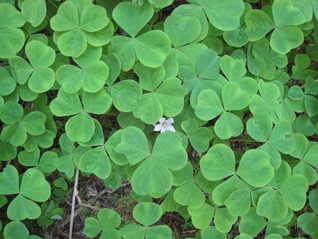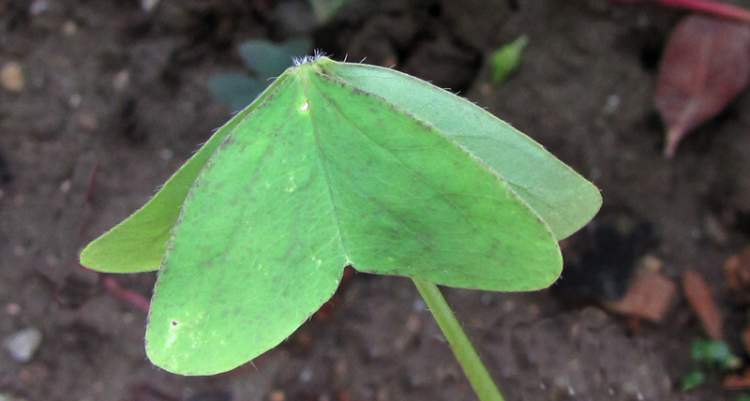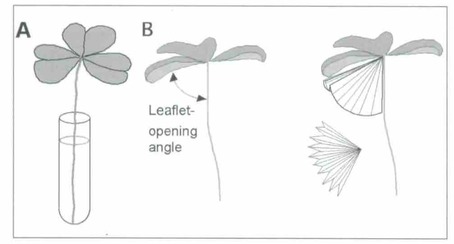Page 429
Wandering through the redwood forests of northern California
Last year I was so excited. During the Fall Break I traveled to the redwood forests of northern California. I wanted to both see these wonderful coastal forest ecosystems, but I also wanted to see the locations where the"Ewoks" lived since this is the ecosystem that George Lucas used when he filmed Episode 6 of Star Wars. Well to my surprise, I came across Oxalis oregana, the redwood sorrel shown below on the left. It is an understory plant, adapted to growing in the deep shade within redwood forests. To my pleasant surprise, the leaves reoriented by transitioning from a horizontal flat position to a near vertical position when exposed to direct sunlight.
Last year I was so excited. During the Fall Break I traveled to the redwood forests of northern California. I wanted to both see these wonderful coastal forest ecosystems, but I also wanted to see the locations where the"Ewoks" lived since this is the ecosystem that George Lucas used when he filmed Episode 6 of Star Wars. Well to my surprise, I came across Oxalis oregana, the redwood sorrel shown below on the left. It is an understory plant, adapted to growing in the deep shade within redwood forests. To my pleasant surprise, the leaves reoriented by transitioning from a horizontal flat position to a near vertical position when exposed to direct sunlight.
|
Now I wondered whether the leaf
reorientation was initiated by a red-light sensor or a blue-light sensor at the
base of the leaflets. Well I happened to have two filters with me on this trip.
Filter #1 allowed only blue wavelengths to pass through. Filter #2 allowed only
red wavelengths to pass through. Luckily I had two test tubes with me. So I cut
off two redwood sorrel leaves and placed one into each of the two test tubes.
Both of the leaves were horizontal. I then positioned a filter above a leaf and
waited and watched.
Well, just as I thought. When the sun fleck came through, one of the leaves remained horizontal while the other leaf responded to the sun fleck and increased its leaf angle. I wonder what happened to the photosynthetic rate during this period. The sun fleck lasted 15 minutes, which is unusually long for a sun fleck. After a few minutes in the sun, I noticed that the leaf remaining horizontal began to change from a deep green to a light green color. I cannot wait to get home and write up these results. Cool. Really cool. |


